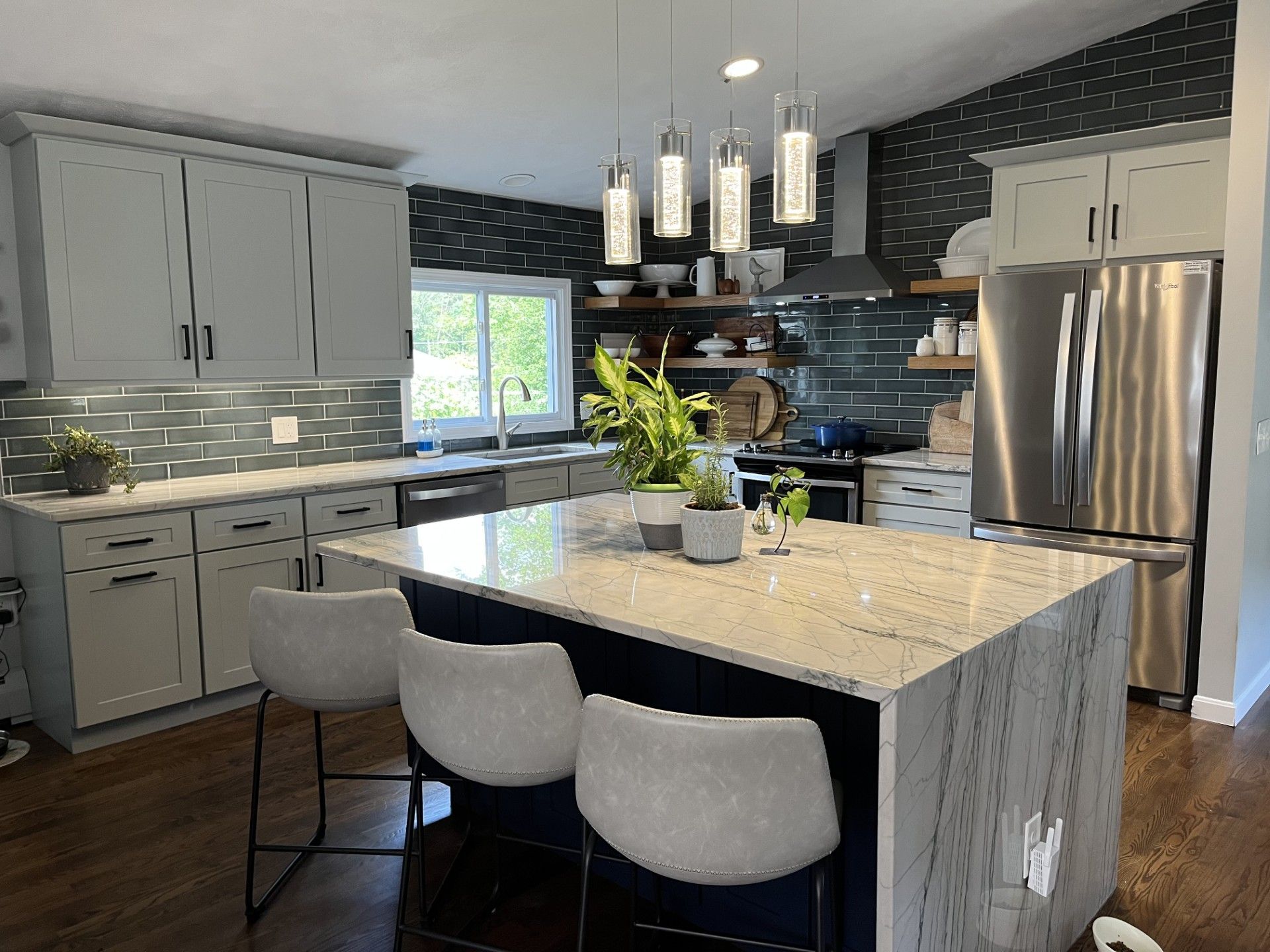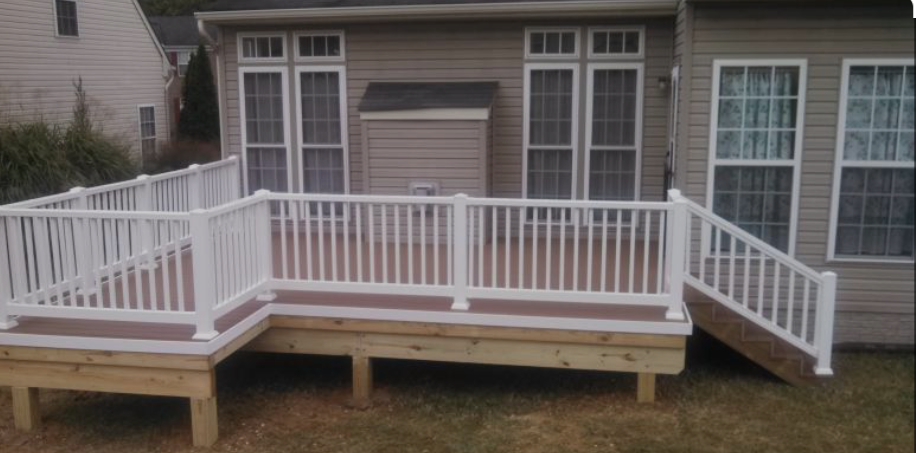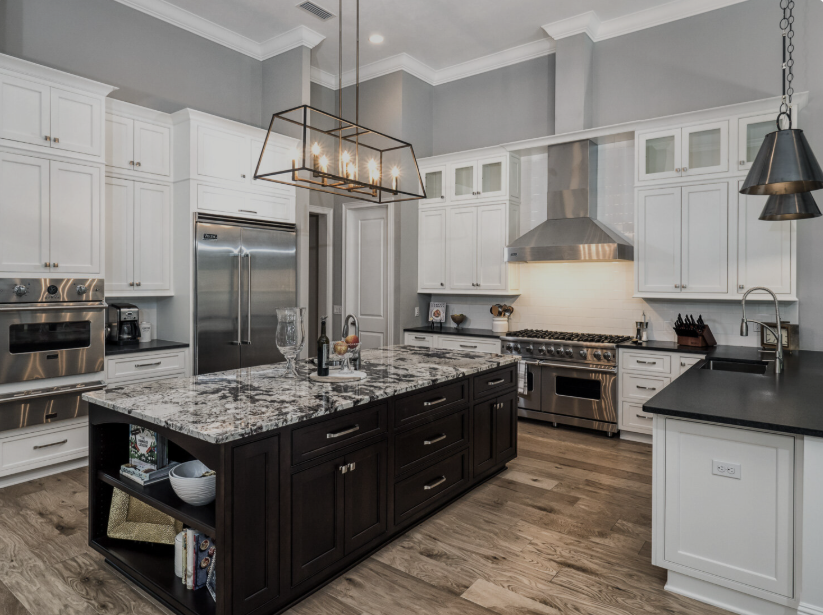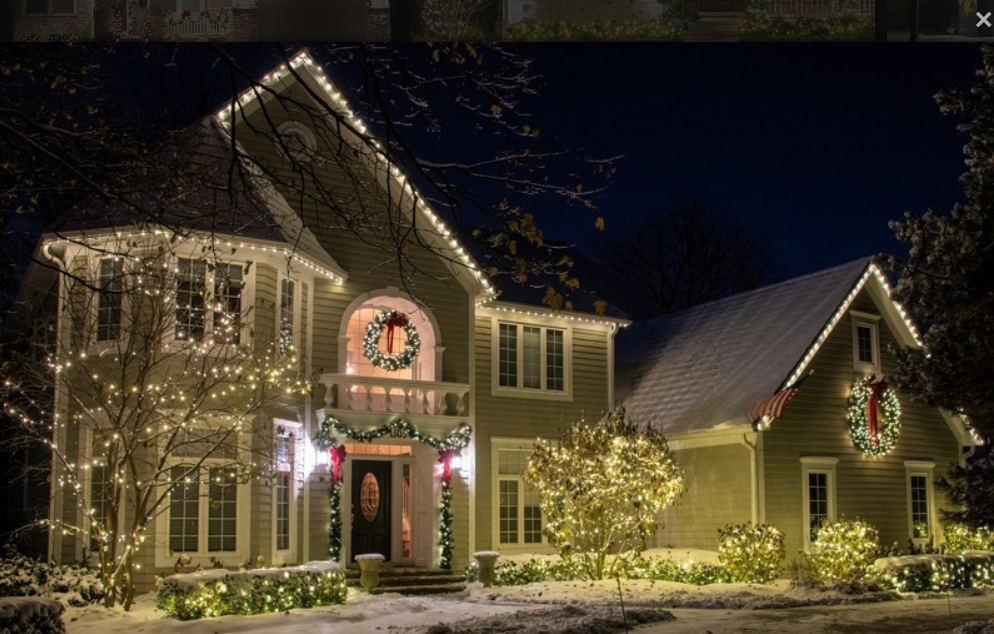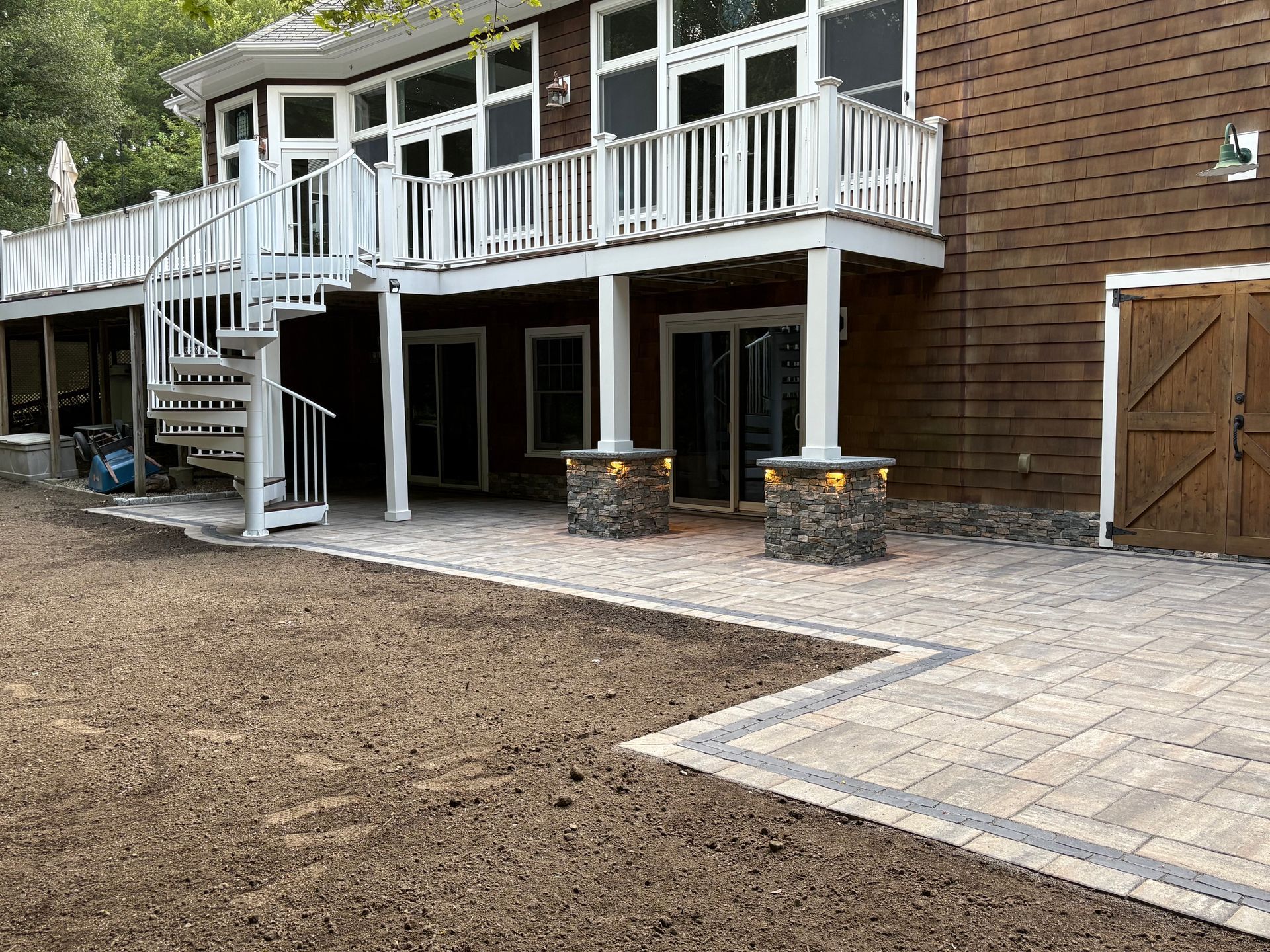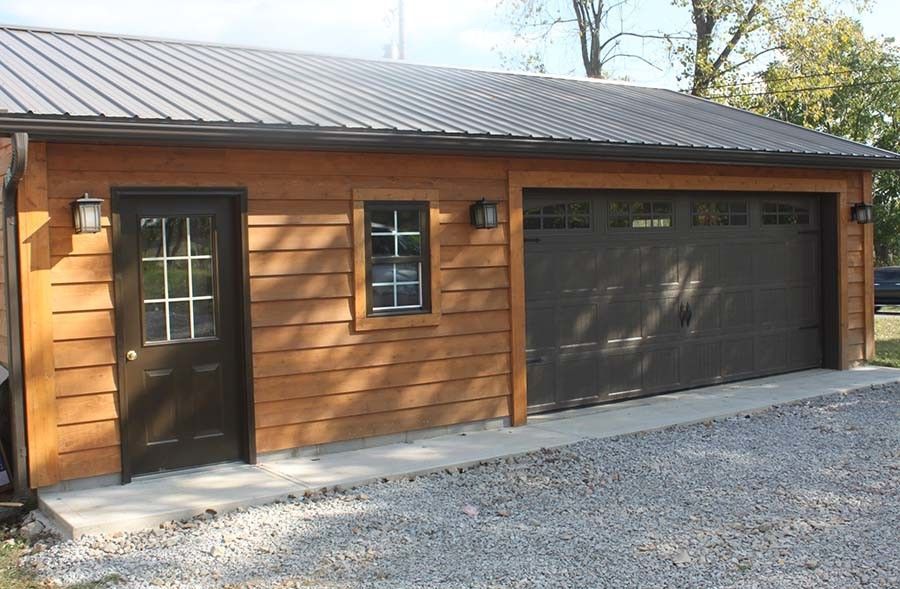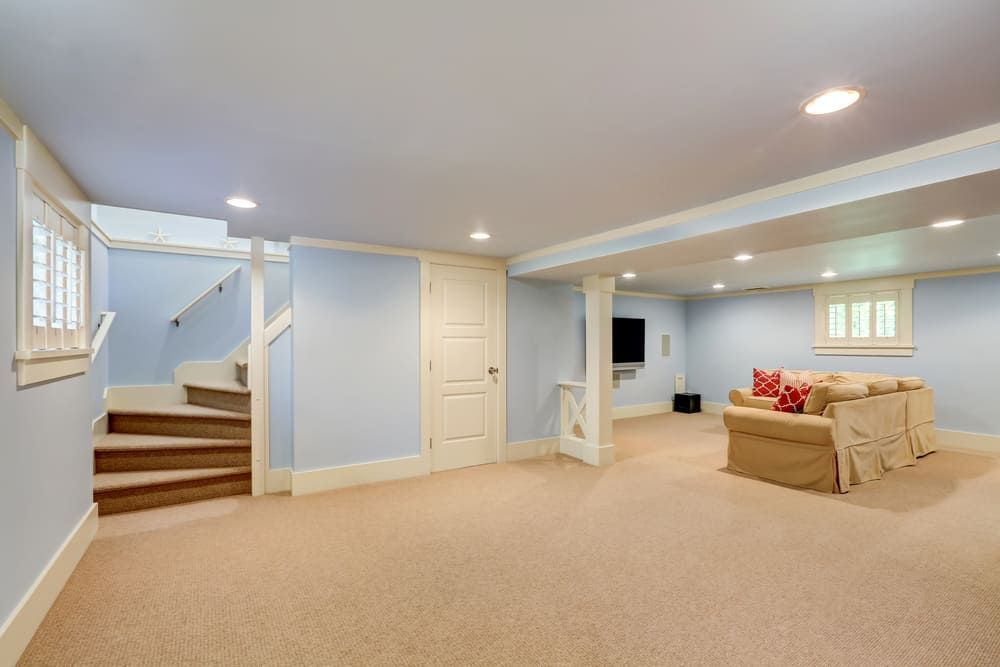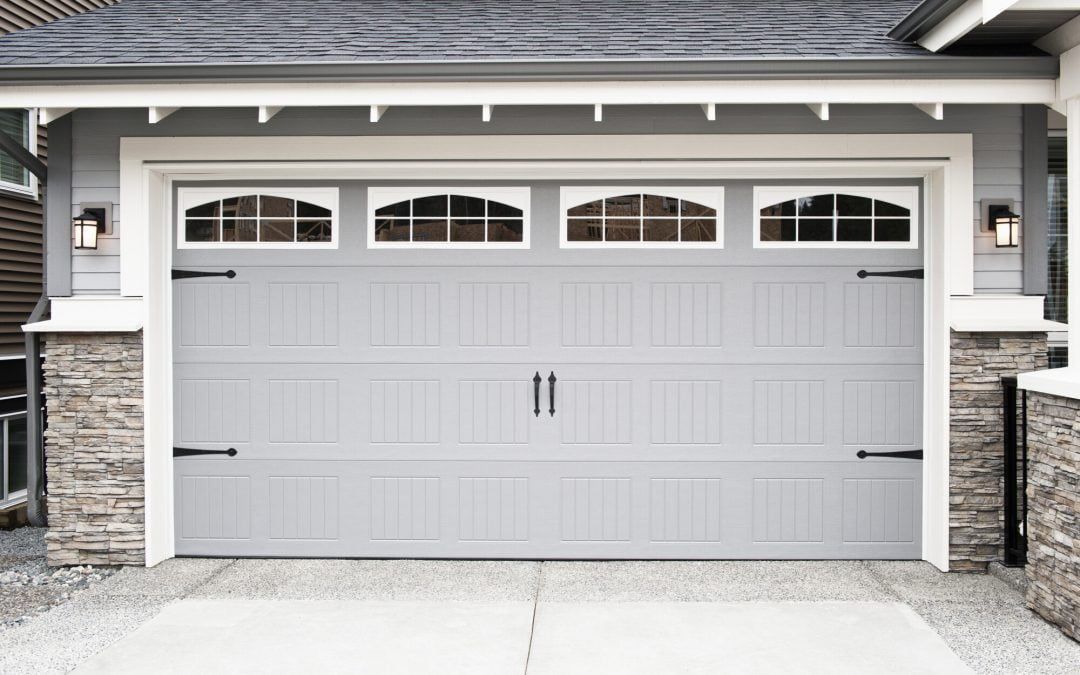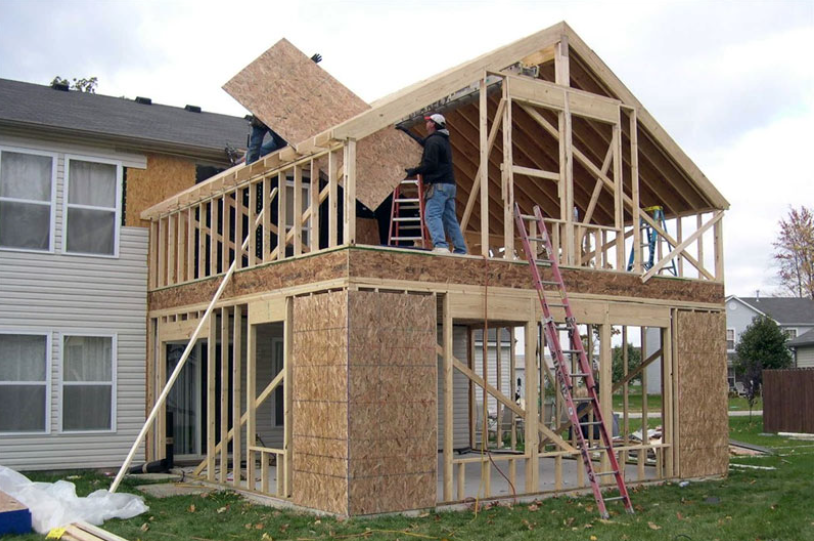Home Addition Mistakes Rhode Island Homeowners Make
Planning a home addition in Rhode Island is exciting but fraught with potential pitfalls. From Providence to Newport, Warwick to Narragansett, homeowners make predictable mistakes that cost thousands in overruns, delays, and diminished value. Understanding these common errors before breaking ground protects your investment and ensures your addition delivers the functionality and value you expect.
What Are the Most Common Home Addition Mistakes in Rhode Island?
The most frequent mistake Rhode Island homeowners make is underestimating total project costs by 20-30%, failing to budget for permits, design fees, and unexpected issues. Other critical errors include hiring unlicensed contractors, ignoring local zoning requirements, inadequate planning for Rhode Island's climate, poor contractor selection, and neglecting to match existing home architecture. These mistakes cost homeowners an average of $15,000-$50,000 in additional expenses and significantly impact project timelines and final results.
Critical Planning Mistakes
Mistake 1: Skipping Professional Design and Architectural Plans
The Error: Many Rhode Island homeowners attempt to save money by sketching rough plans themselves or working with contractors who don't employ professional designers. They assume additions are straightforward and design expertise unnecessary.
Why It's Costly: Amateur designs create functional problems that become permanent. Poor space planning reduces addition usability and value. Structural issues emerge during construction requiring expensive fixes. Building departments reject inadequate plans causing delays. Lack of architectural integration makes additions look obviously added reducing home value. Design changes during construction cost 3-5 times more than proper planning.
Rhode Island Reality: Rhode Island building departments require detailed, professionally stamped plans for most additions. Historic districts in Providence, Newport, and Bristol demand architect-level documentation. Coastal areas need engineering for wind loads and flood zones. DIY plans simply don't meet requirements.
The Right Approach: Hire licensed architects or experienced designers familiar with Rhode Island codes. Invest $3,000-$10,000 in professional design for typical additions. Larger projects warrant $10,000-$25,000 in architectural fees. Design costs typically represent 5-10% of total project budget. This investment prevents exponentially more expensive construction problems and ensures permittable, functional, valuable additions.
Cost of This Mistake: $10,000-$50,000 in construction changes, permit delays, and reduced resale value.
Mistake 2: Failing to Research Zoning and Setback Requirements
The Error: Homeowners design their dream addition without checking municipal zoning regulations, setback requirements, lot coverage limits, or height restrictions. They assume their property allows any addition they desire.
Why It's Costly: Rhode Island municipalities have strict zoning codes. Setback requirements dictate how close additions can be to property lines. Lot coverage limits restrict total building footprint. Height restrictions affect second-story additions. Wetlands buffers prevent construction in certain areas. Coastal zone regulations apply to waterfront properties. Discovering violations after design completion requires expensive redesigns or variance applications.
Rhode Island Examples: Narragansett requires 15-25 foot setbacks depending on zoning district. South Kingstown has strict lot coverage maximums in residential zones. Providence historic districts have height and architectural restrictions. Warwick wetlands buffers prevent construction within 50-200 feet. Coastal communities face CRMC jurisdiction requiring special permits.
The Right Approach: Contact your municipal building department before planning. Request zoning information for your specific property. Review setback requirements, lot coverage limits, and height restrictions. Check for wetlands, historic districts, or coastal designations. Hire surveyors to establish exact property lines and existing coverage. Build zoning compliance into initial designs.
Cost of This Mistake: $5,000-$25,000 for redesigns, variance applications, or abandoned plans; 3-6 months of delays.
Mistake 3: Underestimating Total Project Costs
The Error: Homeowners budget only for construction costs without accounting for design, permits, inspections, landscaping restoration, temporary living expenses, and the inevitable unexpected issues every project encounters.
Why It's Costly: Running out of money mid-project is catastrophic. Contractors require payment on schedule. Incomplete additions create safety hazards and code violations. Stopping work to secure additional funding adds months of delays. Cutting corners to stay on budget compromises quality and safety. Stress and family conflict from financial surprises damage relationships.
Hidden Costs Rhode Island Homeowners Miss: Architectural and engineering fees cost $3,000-$25,000. Building permits range $1,500-$8,000 depending on project size. Soil testing and surveys cost $1,000-$3,000. Temporary living adjustments add $2,000-$8,000. Landscaping restoration runs $2,000-$10,000. Driveway and walkway repairs cost $3,000-$12,000. Interior updates to match addition range $5,000-$20,000. Furniture and window treatments add $3,000-$15,000. Contingency fund for unexpected issues should be 10-20% of construction budget.
The Right Approach: Create comprehensive budget including all soft costs. Add 15-20% contingency for unknowns. Secure financing covering total realistic budget, not just construction estimates. Get detailed written quotes including all work scope. Plan for finishing touches and integration costs.
Cost of This Mistake: $20,000-$75,000 in budget overruns, financing costs, and compromised quality.
Mistake 4: Poor Timing and Seasonal Planning
The Error: Starting major additions in late fall expecting completion before winter, beginning foundation work in March before ground fully thaws, or failing to account for Rhode Island's unpredictable weather and permit processing times.
Why It's Costly: Weather delays cost money through extended contractor time, temporary weatherproofing, potential damage to exposed areas, and extended financing costs. Late-season starts leave homes exposed through winter. Cold weather prevents proper concrete curing and material installation. Rushing to beat weather compromises quality. Permit delays push ideal construction windows.
Rhode Island Seasonal Issues: Spring mud season delays foundation work. Summer is peak season with contractor availability limited. Fall's shorter days reduce work hours. Winter weather stops most exterior work. Hurricane season (June-November) brings storm delays. Snow and ice make December-February nearly impossible for additions.
The Right Approach: Plan additions 6-12 months ahead. Apply for permits 2-4 months before desired construction start. Target May-June start dates for summer completion. Allow buffer time for weather delays. Avoid starting major projects after August unless prepared for potential winter incompletion.
Cost of This Mistake: $5,000-$20,000 in weather-related delays, temporary protection, and extended timelines.
Contractor Selection Mistakes
Mistake 5: Hiring Unlicensed or Uninsured Contractors
The Error: Choosing contractors based solely on lowest bid without verifying licenses, insurance, references, and past work quality. Some Rhode Island homeowners hire unlicensed handymen for major additions to save money.
Why It's Costly: Unlicensed contractors cannot pull permits legally. Work performed without permits creates problems selling home. Uninsured contractors leave homeowners liable for injuries. Poor workmanship requires expensive repairs or complete rebuilds. Contractor disappearances mid-project leave homeowners stranded. No recourse exists for problems with unlicensed contractors. Banks won't finance work by unlicensed contractors.
Rhode Island Requirements: Rhode Island requires contractors register with the Contractor Registration Board. General contractors need liability insurance minimums. Workers compensation insurance required for employees. Electricians and plumbers need separate state licenses. Specific trades require specialized licensing.
The Right Approach: Verify contractor registration at Rhode Island Department of Business Regulation website. Request proof of liability and workers compensation insurance. Check contractor has necessary trade licenses. Review Better Business Bureau ratings. Contact past clients for references. Visit completed projects personally. Never pay large deposits upfront. Use contracts specifying all work scope, timelines, and payment schedules.
Cost of This Mistake: $25,000-$100,000+ for rebuilding poor work; potential legal liability; inability to sell home.
Mistake 6: Accepting Lowest Bid Without Scrutiny
The Error: Automatically choosing the cheapest contractor quote without understanding why prices differ, what's included, and whether low bidders can deliver quality results.
Why It's Costly: Extremely low bids often indicate missing scope items, poor quality materials, inexperienced contractors, or unrealistic timelines. Contractors lowball to win jobs then add change orders multiplying costs. Cheap contractors cut corners compromising structural integrity. Low-quality work reduces home value and requires eventual replacement.
Warning Signs of Bad Bids: Prices 20%+ below other quotes. Vague descriptions of work scope. No detailed material specifications. Lack of permit and design costs. Unusually short timelines. Requests for large upfront payments. Resistance to written contracts. No references or portfolio.
The Right Approach: Get 3-5 detailed written quotes. Compare line items ensuring apples-to-apples comparisons. Ask why prices differ significantly. Verify all quotes include permits, design, materials, labor, and cleanup. Choose contractors offering best value, not just lowest price. Consider reputation, experience, and communication quality. Understand you're investing $100,000-$300,000—cheap contractors risk entire investment.
Cost of This Mistake: $15,000-$60,000 in change orders, poor quality requiring repairs, and project abandonment.
Mistake 7: Inadequate Contract Details
The Error: Signing vague contracts lacking specific details about materials, timelines, payment schedules, change order processes, and project scope. Some homeowners proceed with handshake agreements or minimal documentation.
Why It's Costly: Vague contracts create disputes about what's included. Disagreements over material quality and specifications. No recourse for missed timelines. Unclear payment terms lead to contractor demands. Difficult to enforce verbal agreements. Homeowners lack legal protection from contractor failures.
Essential Contract Elements: Detailed work scope describing every aspect. Specific material brands, grades, and specifications. Timeline with start and estimated completion dates. Payment schedule tied to project milestones. Change order process with required written approvals. Permit and inspection responsibilities. Cleanup and restoration commitments. Warranty terms for workmanship and materials. Dispute resolution procedures. Lien waiver requirements.
The Right Approach: Never sign incomplete contracts. Demand detailed specifications in writing. Ensure payment schedule protects you (never more than 10% upfront, payments tied to verified completion). Include photos or samples of materials. Specify Rhode Island building code compliance. Require written change orders for any modifications. Have attorney review contracts over $50,000.
Cost of This Mistake: $10,000-$40,000 in disputes, legal fees, and unwanted surprises.
Mistake 8: Not Verifying Subcontractor Qualifications
The Error: Assuming general contractors properly vet and hire qualified subcontractors for electrical, plumbing, HVAC, and other specialized work. Homeowners don't directly verify subcontractor licenses and insurance.
Why It's Costly: General contractors sometimes hire cheap unlicensed subcontractors to increase profits. Unqualified electricians create fire hazards and code violations. Poor plumbing leads to leaks and water damage. Inadequate HVAC sizing causes comfort and efficiency problems. Homeowners remain liable for all work regardless of who performs it.
Rhode Island Reality: Electricians must hold Rhode Island electrical license. Plumbers need state plumbing license. HVAC contractors require specific certifications. Some municipalities require separate permits for trade work. Insurance requirements apply to all workers on property.
The Right Approach: Request list of all subcontractors contractor plans using. Verify each subcontractor's licensing and insurance independently. Meet key subcontractors before work begins. Ensure general contractor manages subcontractor quality. Inspect trade work during and after installation. Request copies of all trade permits and inspections.
Cost of This Mistake: $8,000-$35,000 repairing electrical, plumbing, or HVAC problems; potential safety hazards.
Design and Construction Mistakes
Mistake 9: Ignoring Existing Home Architecture and Style
The Error: Designing additions that clash with existing home's architectural style, roofline, materials, or proportions. Modern additions on colonial homes or contemporary updates on historic properties stand out awkwardly.
Why It's Costly: Mismatched additions reduce curb appeal dramatically. Obvious additions hurt resale value significantly. Buyers discount homes with poor architectural integration. Historic commissions reject inappropriate designs. Neighbors complain about aesthetic impacts. Future buyers may require expensive renovations to fix.
Rhode Island Examples: Adding modern flat-roof sections to Victorian homes in Providence. Contemporary glass additions on colonial homes in Barrington. Ranch-style additions on Cape Cod cottages in coastal areas. Vinyl siding additions on historic brick homes in Newport.
The Right Approach: Match existing rooflines, pitch, and materials. Use same or complementary siding and trim. Maintain window proportion and style consistency. Respect home's architectural period and character. In historic districts, work with preservation guidelines. Hire architects experienced in sympathetic additions. Make additions look like original construction.
Cost of This Mistake: $15,000-$40,000 in reduced home value; 5-15% lower resale prices.
Mistake 10: Poor Space Planning and Flow
The Error: Focusing on adding square footage without considering how new space connects to existing rooms, traffic patterns, functionality, and daily use. Creating additions requiring walking through bedrooms to reach bathrooms or dead-end spaces with single access points.
Why It's Costly: Poor layouts reduce functionality and enjoyment. Inconvenient spaces go unused wasting investment. Bad traffic flow creates daily frustration. Difficult-to-furniture rooms limit usefulness. Future buyers recognize poor planning reducing value.
Common Layout Mistakes: Bathrooms accessible only through bedrooms. Kitchens with insufficient counter space or storage. Bedrooms without closets or too small for furniture. Hallways that waste valuable square footage. Stairs placed in inconvenient locations. Single entry/exit creating traffic bottlenecks.
The Right Approach: Work with designers understanding residential flow. Consider how family uses spaces throughout day. Plan multiple access points for key rooms. Ensure adequate storage in all spaces. Size rooms appropriately for intended furniture. Create logical traffic patterns. Think about future resale appeal.
Cost of This Mistake: $12,000-$45,000 remodeling poor layouts; 10-20% functionality loss.
Mistake 11: Inadequate Insulation and Energy Efficiency
The Error: Meeting only minimum building code requirements for insulation, windows, and energy efficiency. Focusing solely on upfront costs without considering long-term utility expenses and comfort.
Why It's Costly: Rhode Island's cold winters and humid summers make energy efficiency critical. Minimum code insulation (R-20 walls, R-38 attic) proves insufficient for true comfort. Poor windows lose heat rapidly. Inadequate air sealing causes drafts and energy waste. High utility bills cost thousands annually. Uncomfortable spaces go unused. Future buyers increasingly demand efficiency.
Rhode Island Energy Costs: Rhode Island has among highest electricity rates nationally. Natural gas prices fluctuate significantly. Poor insulation costs $500-$2,000+ yearly in wasted energy. This compounds to $10,000-$40,000+ over 20 years. Energy-efficient upgrades pay for themselves through utility savings.
The Right Approach: Exceed code minimums for insulation (R-23-30 walls, R-49-60 attic). Install high-performance windows (U-factor below 0.27). Seal all air leaks comprehensively. Size HVAC properly for addition. Consider spray foam insulation for superior performance. Install energy-efficient lighting and appliances. Take advantage of Rhode Island Energy rebates.
Cost of This Mistake: $15,000-$50,000+ in lifetime energy waste; uncomfortable living spaces.
Mistake 12: Neglecting Rhode Island Climate Considerations
The Error: Failing to account for Rhode Island's humid summers, cold winters, coastal wind exposure, salt air corrosion, and hurricane potential when selecting materials and construction methods.
Why It's Costly: Standard materials deteriorate rapidly in coastal environments. Poor moisture management causes mold and rot. Inadequate wind bracing creates structural risks. Winter ice dams damage roofs. Humidity promotes mildew. Salt air corrodes metals and fasteners. Climate-inappropriate choices require premature replacement.
Climate-Specific Issues: Coastal areas need corrosion-resistant fasteners (stainless steel or hot-dipped galvanized). Hurricane zones require engineered connections and impact-resistant windows. High humidity demands proper ventilation and moisture barriers. Salt air accelerates paint and material degradation. Ice dam prevention requires proper attic insulation and ventilation. Foundation drainage essential in Rhode Island's wet climate.
The Right Approach: Use marine-grade fasteners in coastal areas. Install continuous air and moisture barriers. Specify pressure-treated lumber for ground contact. Choose rot-resistant materials (fiber cement siding, composite trim). Ensure proper roof ventilation preventing ice dams. Install seamless gutters with oversized downspouts. Consider impact-resistant shingles in coastal zones.
Cost of This Mistake: $8,000-$30,000 in premature material failure and water damage repairs.
Mistake 13: Improper Foundation and Structural Planning
The Error: Underestimating foundation requirements, attempting to save money with inadequate footings, or failing to tie additions properly to existing structure. Some contractors skip engineering for complex additions.
Why It's Costly: Inadequate foundations settle and crack causing structural damage. Insufficient attachment to existing home creates separation and water infiltration. Second-story additions require significant structural reinforcement. Poor drainage causes foundation problems. Frost heaving damages shallow footings. Structural failures require expensive underpinning or rebuilds.
Rhode Island Soil Challenges: Variable soil conditions across state. Ledge (bedrock) close to surface in many areas complicating excavation. High water tables in low-lying areas. Coastal areas have sandy, unstable soils. Frost depth requires footings below 48 inches. Some areas have expansive clay soils.
The Right Approach: Conduct soil testing before foundation design. Hire structural engineers for second-story and large additions. Ensure footings extend below frost line. Properly tie new foundation to existing. Install perimeter drainage systems. Waterproof all below-grade foundations. Use appropriate foundation type for soil conditions. Obtain all required inspections.
Cost of This Mistake: $20,000-$80,000+ for foundation repairs or structural corrections.
Permit and Legal Mistakes
Mistake 14: Skipping Permits to Save Money and Time
The Error: Some Rhode Island homeowners attempt unpermitted additions to avoid permit fees, inspection delays, and code compliance costs. They believe small additions don't require permits or hope to avoid detection.
Why It's Costly: Unpermitted work is illegal in Rhode Island. Building departments can force removal of unpermitted additions. Selling homes with unpermitted work becomes impossible without retroactive permitting. Lenders won't finance homes with unpermitted additions. Insurance may deny claims for unpermitted work. Property values decrease significantly. Fines and penalties add thousands to costs. Buyers discover unpermitted work during home inspections killing sales. Retroactive permitting costs more than original permits.
Rhode Island Reality: All Rhode Island municipalities require permits for additions. Even small projects need permits and inspections. Building departments discover unpermitted work through neighbor complaints, aerial photography, and assessor reviews. Statute of limitations doesn't eliminate permit requirements. Real estate attorneys identify unpermitted work during title searches.
The Right Approach: Always obtain required permits before starting work. Budget permit costs into project ($1,500-$8,000 typical). Allow time for permit review (2-6 weeks). Schedule required inspections (foundation, framing, electrical, plumbing, final). Keep permits and inspection records permanently. Consider permits insurance protecting investment and ensuring safe, code-compliant construction.
Cost of This Mistake: $10,000-$100,000+ for forced removal, retroactive permitting, fines, or inability to sell home.
Mistake 15: Failing to Notify Neighbors and Address Concerns
The Error: Beginning construction without informing adjacent neighbors, addressing parking and access issues, or considering how construction impacts surrounding properties. Assuming neighbors will accept disruption without communication.
Why It's Costly: Angry neighbors file complaints with building departments. Complaints trigger additional inspections and scrutiny. Disputes over property lines stop construction. Noise complaints limit working hours. Access disputes prevent material delivery. Poor neighbor relations create lasting problems. Some neighbors appeal zoning variances or special permits.
Rhode Island Considerations: Dense neighborhoods mean close neighbors. Historic areas have active neighborhood associations. Coastal communities protect views and privacy. Some municipalities require neighbor notification for variances. Parking and access limited on narrow urban streets.
The Right Approach: Inform adjacent neighbors before starting construction. Explain project scope, timeline, and potential impacts. Address concerns proactively and reasonably. Provide contact information for contractor and yourself. Manage construction debris, parking, and noise considerately. Restore any neighbor property damage immediately. Maintain open communication throughout project.
Cost of This Mistake: $5,000-$25,000 in delays, legal disputes, and forced modifications.
Mistake 16: Ignoring HOA Rules and Approvals
The Error: Proceeding with additions without reviewing homeowners association (HOA) rules or obtaining required architectural review board approval. Assuming municipal permits are sufficient.
Why It's Costly: HOAs have separate approval requirements beyond municipal permits. Architectural review boards enforce design standards, material requirements, and aesthetic guidelines. Violations can force removal or modifications. HOA fines accumulate until compliance. Liens can be placed on properties. HOA approval often required before municipal permits issued.
Rhode Island HOA Considerations: Many condominium complexes and planned communities have HOAs. Waterfront developments often have strict rules. Some historic neighborhoods have covenant restrictions. Common interest communities require approval for exterior changes.
The Right Approach: Review HOA documents before planning addition. Submit plans to architectural review board early. Attend HOA meetings to present project. Address board concerns in design phase. Obtain written HOA approval before applying for municipal permits. Follow HOA construction guidelines for timing, access, and cleanup.
Cost of This Mistake: $8,000-$35,000 for forced modifications or delays; potential forced removal.
Financial and Budget Mistakes
Mistake 17: Inadequate Financing Planning
The Error: Beginning additions without securing complete financing, assuming costs won't exceed initial estimates, or planning to "figure out" funding for overruns if they occur.
Why It's Costly: Running out of money mid-construction is devastating. Contractors may stop work or place liens. Incomplete additions damage home value and salability. Emergency financing carries higher interest rates. Family stress and conflict intensify. Some homeowners forced to sell partially completed projects at losses.
Financing Options Rhode Island Homeowners Miss: Home equity lines of credit (HELOCs) offer flexibility and lower rates. Cash-out refinancing can reduce overall borrowing costs if current rates favorable. FHA 203(k) renovation loans for purchase and renovation combined. Home equity loans provide fixed rates and lump sums. Personal loans for smaller additions. Contractor financing sometimes available but typically expensive.
The Right Approach: Secure financing before beginning construction. Get pre-approved for 20-30% more than estimated costs. Compare financing options for best rates and terms. Understand all loan costs and restrictions. Set up contingency funds for overruns. Review draw schedules matching construction milestones. Consider locking interest rates if using long-term loans.
Cost of This Mistake: $5,000-$25,000+ in higher interest rates, fees, and financial stress.
Mistake 18: Not Planning for Tax Increases
The Error: Forgetting that additions increase property assessments and tax bills. Budgeting only for construction and financing without accounting for ongoing tax increases.
Why It's Costly: Rhode Island property taxes already rank among highest nationally. Additions trigger reassessments often immediately upon completion. Tax increases typically $1,500-$5,000+ annually for substantial additions. These ongoing costs affect affordability and long-term budgeting. Surprise tax bills create financial strain.
Rhode Island Assessment Process: Municipalities reassess properties periodically. Building permits trigger tax assessor reviews. Completed additions add value to assessments. Rhode Island tax rates vary significantly by municipality (Providence, Warwick, and other cities have different rates). Appeals possible but require documentation.
The Right Approach: Contact local tax assessor to understand likely assessment increase. Calculate annual tax increase based on addition value. Factor increased taxes into affordability analysis. Budget for higher tax bills in addition to mortgage/loan payments. Consider tax increase when evaluating addition versus moving.
Cost of This Mistake: $2,000-$6,000+ yearly in unexpected tax increases; potential financial strain.
Communication and Management Mistakes
Mistake 19: Poor Communication and Project Management
The Error: Assuming contractors will handle everything without homeowner involvement. Failing to maintain regular communication, site visits, or oversight. Not documenting changes, issues, or agreements.
Why It's Costly: Problems not caught early become expensive to fix. Misunderstandings about expectations lead to disappointing results. Lack of documentation makes disputes difficult to resolve. Contractors may cut corners without oversight. Quality suffers without homeowner vigilance.
Communication Best Practices: Schedule regular meetings with contractor (weekly minimum). Visit site daily or every other day. Document everything with photos and written notes. Address concerns immediately when discovered. Maintain change order log with written approvals. Keep all emails, texts, and correspondence. Create project binder with plans, permits, contracts, and records.
The Right Approach: Stay engaged throughout construction without micromanaging. Ask questions when uncertain about methods or materials. Inspect work at key milestones before covering up. Maintain professional but involved relationship with contractor. Document site conditions regularly. Address issues promptly and diplomatically. Keep communication written when possible.
Cost of This Mistake: $8,000-$30,000 in missed problems requiring later correction.
Mistake 20: Not Planning for Living Through Construction
The Error: Underestimating how disruptive home additions are to daily life. Failing to plan for dust, noise, lack of access to areas, and general chaos during construction.
Why It's Costly: Unprepared families experience significant stress and conflict. Work-from-home becomes impossible without planning. Children and pets need special accommodations. Eating out regularly adds thousands to costs. Lost productivity and quality of life has real value.
Construction Realities: Dust penetrates everywhere despite precautions. Noise makes phone calls and concentration difficult. Contractors arrive early and work all day. Bathroom and kitchen access may be limited. Debris and materials clutter yards. Parking and access restricted. Project timelines always extend longer than estimated.
The Right Approach: Plan temporary living arrangements for major disruptions. Set up temporary kitchen for kitchen additions. Establish dust barriers and cleanup protocols. Create contractor access plan protecting privacy. Prepare family members for disruption timeline. Consider temporary relocation for most invasive phases. Build flexibility into work and family schedules. Set realistic expectations about cleanliness and access.
Cost of This Mistake: $3,000-$10,000 in unexpected temporary living costs; significant family stress.
Avoiding These Mistakes: Your Action Plan
Before You Start: Research thoroughly spending weeks or months understanding options. Get professional design help regardless of project size. Verify all zoning requirements and restrictions. Create realistic comprehensive budget with 20% contingency. Secure complete financing before beginning. Interview multiple licensed, insured contractors. Check references and visit past projects. Understand Rhode Island's seasonal construction realities.
During Planning: Get detailed written contracts specifying everything. Obtain all required permits before starting work. Notify neighbors and HOA if applicable. Plan for tax increases and ongoing costs. Set up project documentation system. Establish communication protocols with contractor. Prepare family for construction reality.
During Construction: Maintain regular site oversight and communication. Document everything with photos and notes. Address issues immediately when discovered. Approve all changes in writing only. Keep project organized and on schedule. Maintain good neighbor relations. Protect home from construction damage.
The Bottom Line: Most Rhode Island home addition mistakes are preventable through proper planning, professional help, realistic budgeting, and good contractor selection. Avoiding these 20 common errors saves tens of thousands of dollars while delivering additions that enhance value, functionality, and enjoyment for decades.
Ready to plan your Rhode Island home addition without costly mistakes? Rockhouse Construction brings decades of experience helping homeowners throughout Rhode Island avoid the pitfalls that plague addition projects. We guide you through every phase from initial planning through final inspection, ensuring your addition is properly designed, permitted, constructed, and integrated. Our comprehensive approach addresses zoning, design, energy efficiency, Rhode Island climate considerations, and long-term value.
Contact Rockhouse Construction today for a consultation about your addition plans. We'll help you avoid expensive mistakes and create an addition that exceeds your expectations. Build smart. Build right. Build with confidence.
